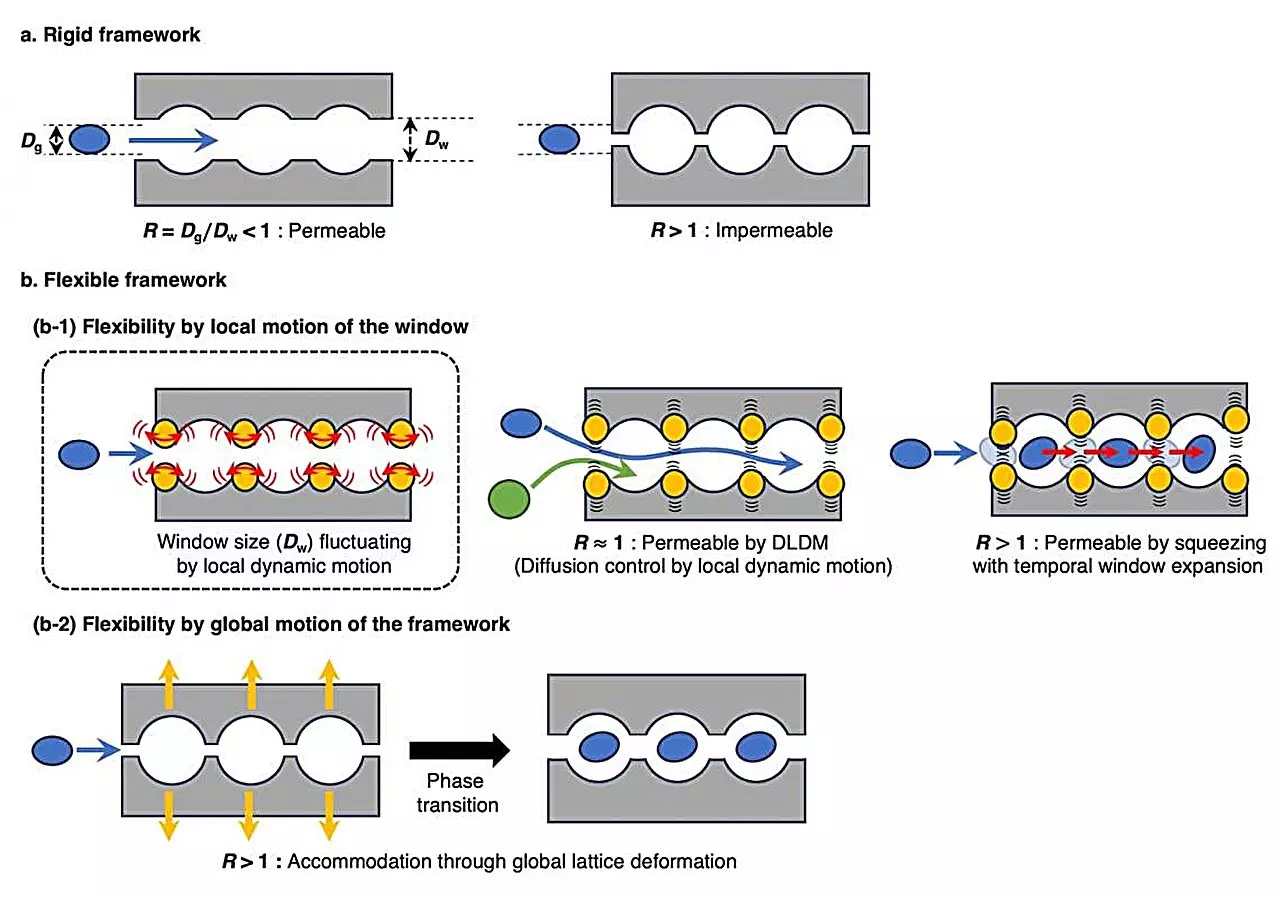Recent advancements in material science have shed light on the intricate nature of porous coordination polymers (PCPs), also known as metal-organic frameworks (MOFs). A groundbreaking study published in *Communications Materials* reveals that the very first PCP introduced to the scientific community in 1997 possessed not only considerable gas adsorption capabilities but also exhibited adaptability unlike anything previously recognized in the realm of early PCPs. This re-evaluation of past discoveries highlights a significant transformation in our understanding of these materials and their potential applications in gas storage and separation technologies.
At the core of PCPs lies an intricate network of metal ions interconnected by organic ligands, forming a maze of microscopic pores. This porous architecture allows PCPs to effectively capture and store gases and liquids, akin to a sponge designed specifically for gas absorption. “Envision a sponge, but instead of soaking up water, it absorbs gases,” explains Susumu Kitagawa, who led the recent study at the Institute for Integrated Cell-Material Sciences at Kyoto University. This unique property positions PCPs as promising candidates for diverse applications ranging from hydrogen storage for clean energy initiatives to selective gas filtration processes in various industrial contexts.
The ability of PCPs to evolve in response to their surroundings marks them as pivotal tools in environmental monitoring and hazard detection. The study underscores the importance of understanding how these materials interact with different gases, revealing their potential for air quality assessment and safety measures.
The term ‘soft PCP’ has now emerged to describe materials that can undergo structural modifications in response to gas interactions. Unlike their rigid counterparts, soft PCPs exhibit the ability to adapt and expand, enabling them to store larger amounts of gas—a property akin to how a flexible sponge conforms to hold more liquid. “The flexibility in our materials enhances their effectiveness, allowing for a much higher capacity for gas retention,” notes Hirotoshi Sakamoto, the study’s primary author. This adaptability highlights a previously overlooked but crucial aspect of the performance of early PCPs.
By employing modern analytical techniques such as single-crystal X-ray diffraction, researchers re-examined historical PCPs, uncovering their ability to slightly alter their structure upon gas adsorption. The pioneering cobalt PCP, known as Co-TG, is significant in this context. Initially recognized for its superior gas-capturing capabilities, Co-TG is now further validated as a soft PCP, marking a fundamental shift in the interpretation of early gas storage materials.
The revelation that early PCPs functioned as soft materials not only rewrites the narrative surrounding their development but also sets the stage for future innovations. Recognizing these foundational examples provides a vital understanding that can propel advancements in gas separation technologies, carbon capture initiatives, and more efficient energy storage solutions, including hydrogen fuel cells.
Ken-ichi Otake, a co-researcher, articulates the excitement surrounding these findings: “By acknowledging that early PCPs were adept in their unique way of trapping gases, we can appreciate the groundwork they laid for subsequent advancements in material science.” This retrospective analysis encourages a culture of revisiting historical data with new methodologies, fostering innovation across established scientific domains.
This research conclusively demonstrates the value of applying modern scientific techniques to historical materials, revealing latent properties that can significantly enhance their utility. The notion of learning from past discoveries to unlock new avenues in material application is a powerful reminder of the dynamism inherent in scientific exploration.
The insights gained from re-evaluating porous coordination polymers not only enhance our understanding of these materials but also underscore their immense potential across numerous fields. As researchers continue to explore and innovate, we are likely to witness a surge in applications that utilize the exceptional properties of soft PCPs, thus opening new frontiers in gas storage and separation technologies. This journey highlights the importance of adaptability and curiosity in scientific endeavors, paving the way for a future where even the most established concepts can evolve with fresh perspectives.

